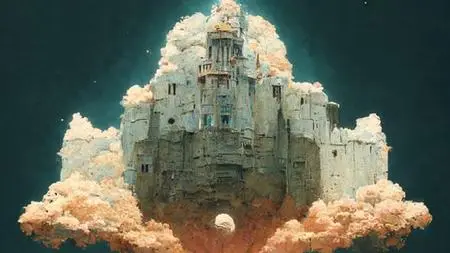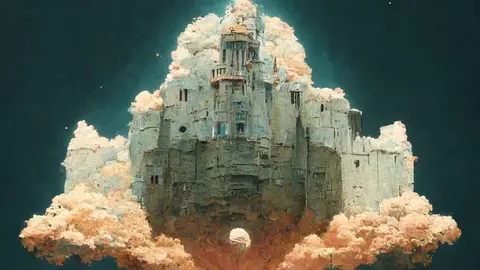Art Generation Using Artificial Intelligence
Published 4/2023
MP4 | Video: h264, 1280x720 | Audio: AAC, 44.1 KHz
Language: English | Size: 3.14 GB | Duration: 2h 43m
Published 4/2023
MP4 | Video: h264, 1280x720 | Audio: AAC, 44.1 KHz
Language: English | Size: 3.14 GB | Duration: 2h 43m
AI art generation techniques
What you'll learn
AI art generation techniques
Machine learning
Neural networks
Collecting and preparing data
Training AI models
Generating art
Exploring the fure of art generation using AI
Ethical considerations
Requirements
Basic programming skills
Digital art skills
Familiarity with AI concepts
Creativity and an interest in art
Description
Section 1: Introduction to AI Art GenerationWhat is AI art?A brief history of AI artDifferent types of AI art (e.g. style transfer, GANs)Overview of the tools and software used in AI art generationSection 2: Understanding Machine LearningWhat is machine learning?Supervised vs. unsupervised learningNeural networks and deep learningData preprocessing techniques (e.g. normalization, data augmentation)Section 3: Collecting and Preparing DataThe importance of data in AI art generationTips for collecting and preparing data for use in AI modelsData cleaning techniquesData labeling strategiesOverview of public datasets for AI art generationSection 4: Training AI ModelsChoosing the right architecture for your AI modelSetting up your training environment (e.g. using cloud-based services)Strategies for monitoring and improving model performanceTechniques for fine-tuning your AI modelSection 5: Generating ArtTechniques for selecting and manipulating images and videos for use in AI art generationUsing pre-trained models for generating artFine-tuning model parameters for different artistic effectsSelecting output formats (e.g. digital images, video)Section 6: Exploring the Future of AI ArtEmerging trends in AI art generation (e.g. GANs, style transfer)Possibilities for future developments in the fieldPotential applications for AI art in different industriesSection 7: Ethical ConsiderationsIntellectual property considerations for AI-generated artAddressing bias and discrimination in AI art generationThe role of human input in the creative processOther ethical considerations in AI art generationEach section could include a combination of video lectures, written content, interactive exercises, and hands-on projects to help students learn and apply the material.
Overview
Section 1: Introduction to AI art generation
Lecture 1 What is AI art?
Lecture 2 A brief history of AI art
Lecture 3 Different types of AI art (e.g. style transfer, GANs)
Lecture 4 Overview of the tools and software used in AI art generation
Section 2: Understanding Machine Learning
Lecture 5 What is machine learning?
Lecture 6 Supervised vs. unsupervised learning
Lecture 7 Neural networks and deep learning
Lecture 8 Data preprocessing techniques (e.g. normalization, data augmentation)
Section 3: Collecting and Preparing Data
Lecture 9 The importance of data in AI art generation
Lecture 10 Tips for collecting and preparing data for use in AI models
Lecture 11 Data cleaning techniques
Lecture 12 Data labeling strategies
Lecture 13 Overview of public datasets for AI art generation
Section 4: Training AI Models
Lecture 14 Choosing the right architecture for your AI model
Lecture 15 Setting up your training environment (e.g. using cloud-based services)
Lecture 16 Techniques for fine-tuning your AI model
Lecture 17 Strategies for monitoring and improving model performance
Section 5: Generating Art
Lecture 18 Techniques for selecting and manipulating images and videos for use in AI art ge
Lecture 19 Using pre-trained models for generating art
Lecture 20 Fine-tuning model parameters for different artistic effects
Lecture 21 Selecting output formats (e.g. digital images, video)
Section 6: Exploring the Future of AI Art
Lecture 22 Emerging trends in AI art generation (e.g. GANs, style transfer)
Lecture 23 Possibilities for future developments in the field
Lecture 24 Potential applications for AI art in different industries
Section 7: Ethical Considerations
Lecture 25 Intellectual property considerations for AI-generated art
Lecture 26 Addressing bias and discrimination in AI art generation
Lecture 27 The role of human input in the creative process
Lecture 28 Other ethical considerations in AI art generation
Artist: Traditional artists who want to explore new mediums and techniques or digital artists who want to incorporate AI into their workflow.,Designers: Graphic designers, web designers, or UI/UX designers who want to experiment with AI-generated graphics and images.,Students: College and university students interested in art, computer science, or engineering who want to learn about the creative possibilities of AI-generated art.,Tech enthusiasts: Anyone interested in learning about the latest advances in artificial intelligence and exploring its application to art and creativity.,Hobbyists: Anyone with an interest in digital art and AI who wants to explore this exciting new field.



